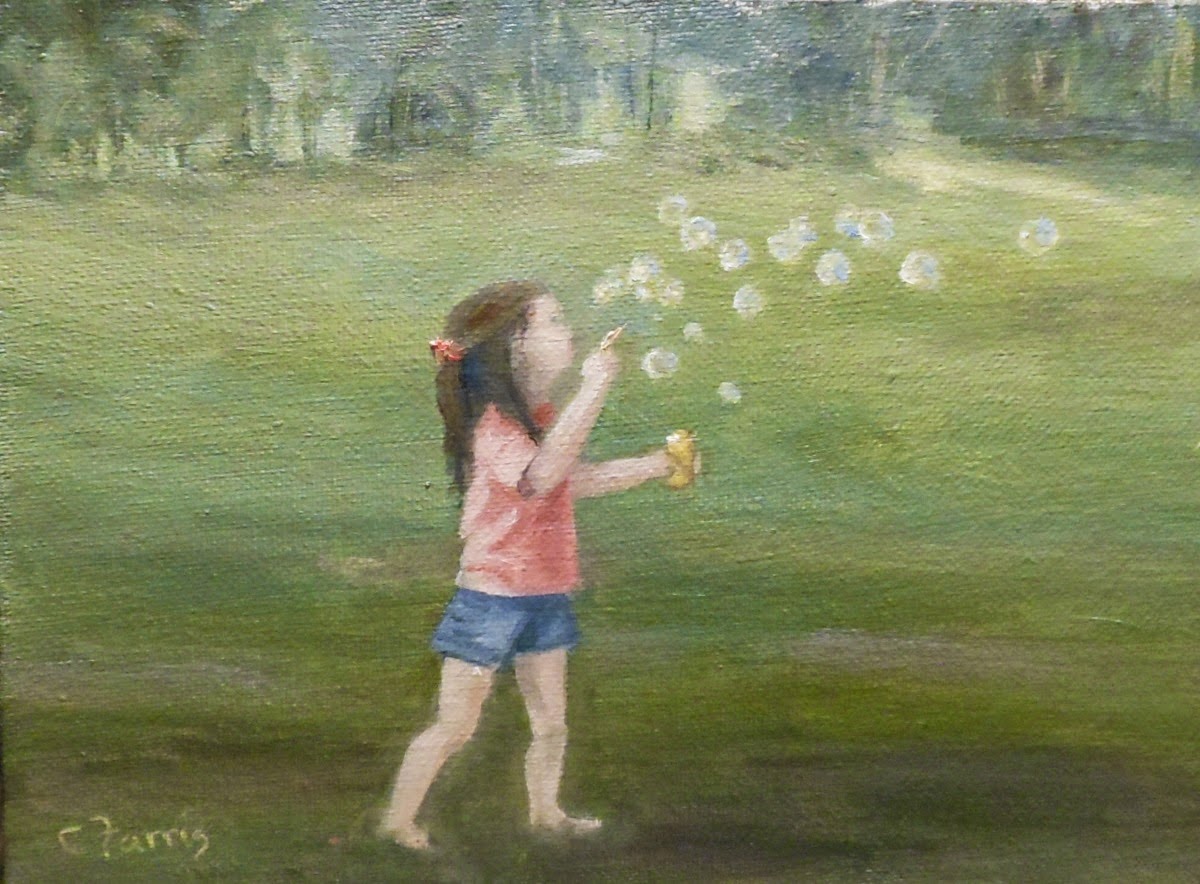Reference photos & acrylic underpaintings. Two in black and white, one in color.
First let me start by saying that these comments are my
interpretation of a painting process that I have successfully used for many
years. Each artist should experiment with different methods and choose for
themselves. Although this is written with landscape painting in mind, the ideas
also pertain to still-life painting.
I have found that there are four basic
problems common to every painting – composition, shapes, values and color.
By laying in an underpainting in tones of black and white
you are solving the first three problems - composition, shapes and values.
Composition and shapes go hand in hand. Ignoring
details, I look for the general shapes, balance and variety. I move components,
eliminate some and alter shapes all for the benefit of the composition. I try
to make my shapes correct knowing that I can alter them a little, but not make
major changes, when I am in the painting stage. This is not a color-book style
of staying in the lines, but I need to know that my shapes and angles are
reasonably correct.
Values. I keep in mind that with overhead light from
the sky, the horizontal planes are the lightest, the angled planes a bit darker
and the vertical planes the darkest. This changes if the source of light is low
(sunset, sunrise). The lightest plane is always perpendicular to the source of light.
Planes get darker as they angle away from the direct light. It is important to determine
your light source and its direction then state the value of the planes
accordingly. The light direction will also determine the placement of your cast shadows.
Aerial perspective is a result of values decreasing as they recede into the
distance.
After managing these three problems as correctly as
possible, my underpainting is done.
Now I only have color to worry about. My foundation
is complete. Color theory is a complex subject and we can talk about that at another time. I determine the color of my light and adhere to the rules of aerial perspective as I work to mix the colors in the values that I have predetermined in my
underpainting.
Oil paints are not
as substantial as you might think. Many of our oil paints are transparent,
especially the dark colors. Covering a white canvas with transparent dark paint
can be difficult unless you lay the colors in thickly and then you have the
problem of working into thick, wet paint.
Having the gray
values in place allows you to apply these transparent colors as a glaze, making
this thin application of oils look rich and substantial. Then the lighter and
more opaque colors can be easily applied over this thinner paint.
Underpaintings can
be done in shades of gray, using black and white, or in color with bits of the color allowed to show through the finished
painting. You can also glaze your underpainting with a thin wash of oil paint if you desire a colored base.
Acrylic paint, if
thinly applied, dries in about 5 minutes and you are ready to go. If you choose to do an underpainting
in oils the drying time will be longer. I prefer to use an acrylic
underpainting in my studio as it is odor-free. Painting outside, I use an oil
and turp mixture for my underpainting. The mixture dries quickly in the sun and
the vapors from the evaporating mixture aren't noticeable outside. In a studio
setting the oil/turp vapors would be very annoying. And, yes, you can paint oil
over acrylic if you keep the acrylic layer thin.
If I stay true to my underpainting I will have a better
chance of a successful painting. I have, on occasion, strayed, and always came
away disappointed with my results. Good painting takes lots of practice,
concentration and discipline as well as knowledge. I find that breaking a
painting down into logical steps makes the painting process easier. The phrases –
“thick over thin” and “light over dark” bring to mind the importance of
“working from the general to the specific”. Each stage should be as correct as
possible before moving on. Oil paint looks richer if applied in two coats.
Don’t move on to the second coat if the first one isn't correct.
An underpainting helps to simplify the difficult process of painting. I hope you will try it for yourself.
I look forward to your comments and questions.
Thank you for visiting with me today.
Celene
.JPG)
.JPG)
.JPG)

.JPG)
.JPG)

.JPG)
.JPG)
.JPG)
.JPG)
.JPG)
.JPG)

.JPG)
.JPG)
.JPG)
.JPG)
.JPG)
.JPG)
.JPG)
.JPG)
.JPG)

.jpg)
.JPG)
.JPG)
.jpg)
.JPG)
.JPG)

.JPG)




.JPG)
.JPG)
.JPG)


.JPG)
.JPG)



.JPG)


